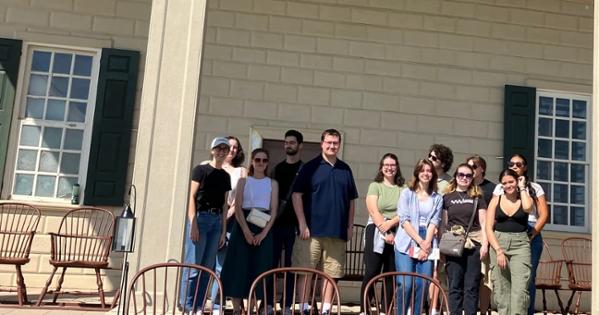The American War of Independence and Russia

On Saturday, October 5, 2024, The Carmel Institute organized a trip to the George Washington’s Mount Vernon. Professor Fedyashin gave the students an hour-long tour of the Museum and Education Center. And then the group proceeded to explore the mansion and estate.
The students read the following articles exploring the role that Catherine the Great played in the American War of Independence as well as the impact the American Revolution and its ideas had on Russian and Soviet revolutionaries, dissidents, and historians-- Frank A. Golder’s “Catherine II. and The American Revolution,” Nikolai Bolkhovitinov’s “The Declaration of Independence: A View from Russia,” and Norman Desmarais’s “Russia and the American War for Independence.” Dr. Fedyashin pointed out that Jean-Antoine Houdon’s original bust study of General Washington could not have come about had he agreed to the invitation from Catherine the Great and traveled to Russia instead in 1785. But the French sculptor found the American experiment more provocative and engaging and spent two weeks in 1785 at Mount Vernon.
Museum visits, concert attendance, and class-trips have been part of the Carmel Institute’s programming since its inception. As Professor Fedyashin has always reminded his students, although our knowledge about the past depends primarily on reading, history must also be walked, seen, touched, smelled, and tasted.
The students also Richard Wortman’s chapter about Catherine the Great in Scenarios of Power, so Dr. Fedyashin placed the material culture with which the Washingtons surrounded themselves into the broader cosmopolitan culture of the Enlightenment which remained remarkably consistent despite the differences in political systems and cultures. As the group toured the grounds with their workspaces and living quarters for the enslaved, Dr. Fedyashin pointed out the similarities and differences between American slavery and Russian serfdom.
The trip was a visual component of a holistic experience that stays with students of history for much longer. After the tour, the group went to lunch. Engaging with the history of political systems and material culture on the page and in museums is the best way to explore the multiple connections between Russian and American history.